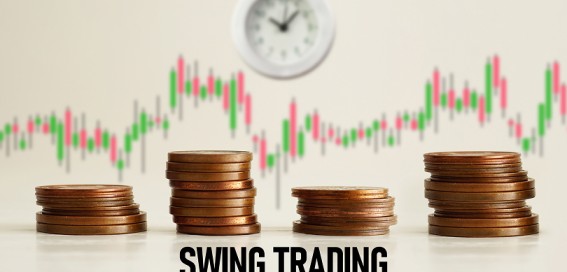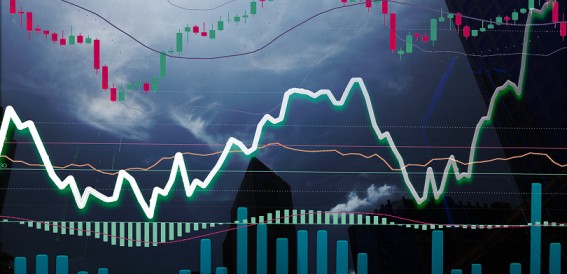- Last Updated: Feb 19,2024 |
- Religare Broking
In the fast-paced world of financial markets, identifying top trends
is paramount for successful trading and investment strategies. A "top trend" refers to a prevailing direction in a financial asset's price movement over a specific period. Recognising and understanding these trends can make a substantial difference in making informed decisions.
- Understanding Trend Indicators
- Top 5 Trend Indicators to Identify Top Trends
- Why traders need to identify Top Trends Using Trend Indicators
- Conclusion
Topics Covered :
To achieve this, traders often turn to powerful tools known as trend indicators. These indicators provide invaluable insights into market behavior, allowing traders to gauge a trend's strength and potential longevity. In this comprehensive guide, we will delve into the world of trend indicators, exploring how they function and how you can utilize them effectively to identify and capitalize on top trends in the financial markets.
Understanding Trend Indicators
Trend indicators are essential tools for traders in financial markets. They analyse historical price data and provide insights into the direction and strength of a trend. Moving averages, for example, smooth out price fluctuations to reveal the underlying trend. Relative Strength Index (RSI) measures momentum while Moving Average Convergence Divergence (MACD) combines trend and momentum analysis. Bollinger Bands help gauge volatility, and Fibonacci retracement levels identify potential reversal points. Understanding and effectively using these indicators can greatly enhance a trader's ability to make informed decisions and navigate the complexities of the market.
Top 5 Trend Indicators to Identify Top Trends
Trend indicators play a crucial role in trading, offering valuable insights into the prevailing market conditions. These indicators utilise mathematical calculations and historical price data to help traders spot potential trends and their strengths. This section will delve into the top five trend indicators widely used by traders and investors to identify and leverage top trends.
-
Moving Averages
Moving averages are fundamental trend indicators used to smooth out price data over a specified period. They help identify a trend's general direction by filtering out short-term fluctuations. There are different types of moving averages, including simple moving averages (SMA) and exponential moving averages (EMA). The SMA gives equal weight to each data point, while the EMA assigns more weight to recent prices. Traders often use crossovers between short-term and long-term moving averages to identify potential trend reversals or confirm existing trends.
-
Relative Strength Index (RSI)
The Relative Strength Index is a momentum oscillator that measures the speed and change of price movements. It ranges from 0 to 100, with values above 70 indicating overbought conditions and values below 30 indicating oversold conditions. Traders use the RSI to identify potential trend reversals or corrections. The RSI can provide powerful signals for entering or exiting trades when combined with other technical indicators, such as moving averages.
-
Moving Average Convergence Divergence (MACD)
The MACD is a versatile trend indicator that combines elements of both trend-following and momentum indicators. It consists of two lines – the MACD line and the signal line – and a histogram representing the difference between them. Traders look for crossovers between the MACD and signal lines to identify potential trend shifts. Additionally, the MACD histogram provides insights into the current trend's strength. A rising histogram indicates increasing momentum, while a falling histogram suggests weakening momentum.
-
Bollinger Bands
Bollinger Bands consist of a middle band (usually a 20-period moving average) and two outer bands that are standard deviations away from the middle band. These bands expand and contract based on market volatility. When prices approach the upper band, it may indicate an overbought condition, while prices nearing the lower band may suggest an oversold condition. Traders use Bollinger Bands to identify potential trend reversals or gauge an existing trend's volatility.
-
Fibonacci Retracement Levels
While not a traditional indicator, Fibonacci retracement levels are a powerful tool for identifying potential areas of support or resistance within a trend. These levels are based on the Fibonacci sequence and ratios (such as 38.2%, 50%, and 61.8%) that are considered significant in financial markets. Traders use Fibonacci retracement levels to identify potential reversal points where a trend may resume after a retracement.
These top five trend indicators are invaluable tools for traders and investors seeking to identify and capitalise on top trends in the financial markets. Each indicator offers unique insights into market behaviour, allowing for a more comprehensive understanding of prevailing trends. By incorporating these trend indicators into your trading strategy, you can successfully enhance your ability to navigate the complexities of the financial markets.
Why traders need to identify Top Trends Using Trend Indicators
Identifying top trends using trend indicators is paramount for traders looking to make informed and profitable decisions in the financial markets. Here's why:
1. Enhanced Decision-Making :
Recognising prevailing trends provides traders with a clear direction of market movement. This enables them to make decisions on whether to buy, sell, or hold an asset, increasing the likelihood of making profitable trades.
2. Minimising Guesswork :
Relying on gut feelings or intuition alone can lead to costly mistakes. Trend indicators provide objective data based on historical price movements, reducing reliance on subjective judgments and minimising the risk of making impulsive trades.
3. Risk Management :
Understanding the strength and duration of a trend allows traders to set appropriate stop-loss levels and position sizes. This helps manage risk effectively and preserve capital, especially in volatile markets.
4. Timing Entries and Exits :
Trend indicators can pinpoint optimal entry and exit points within a trend. This allows traders to enter positions at favourable prices and exit before a trend reversal, maximizing potential profits.
5. Avoiding Counter-Trend Trading :
Attempting to trade against a prevailing trend can be highly risky. Trend indicators help traders identify when a trend is strong, reducing the temptation to go against it.
6. Adapting to Changing Market Conditions:
Trends can change over time due to various factors. Trend indicators provide early warnings of potential shifts, allowing traders to adjust their strategies accordingly.
Conclusion
In the ever-evolving world of financial markets, recognising and capitalising on top trends is the cornerstone of successful trading. Utilising powerful tools like trend indicators empowers traders to navigate the complexities confidently. Each indicator offers unique insights into market behavior, from Moving Averages to Fibonacci Retracement Levels. By integrating these indicators into their strategies, traders can make well-informed decisions, effectively manage risk, and seize opportunities presented by prevailing trends. This comprehensive guide equips traders with the knowledge and tools needed to thrive in the dynamic landscape of financial markets. Embracing these insights, traders can embark on a path towards more informed, profitable, and sustainable trading practices.

















